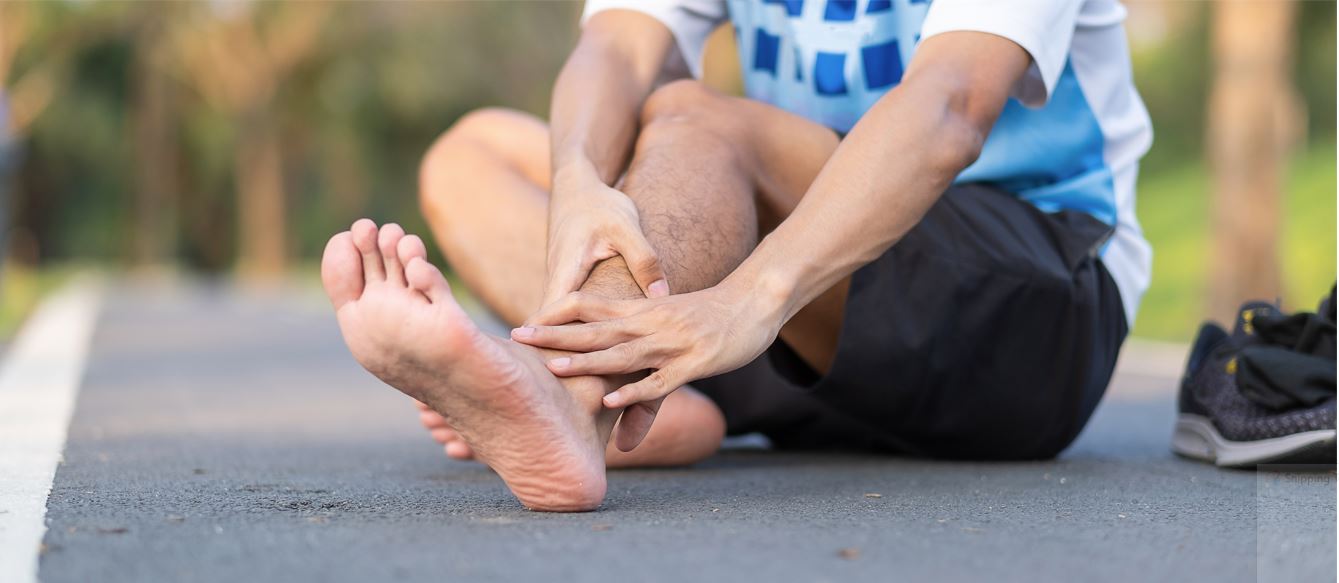
Rheumatoid arthritis (RA) of the foot can manifest as painful symptoms in the ankle, the hindfoot, midfoot or top of the foot, forefoot – including toes and ball of the foot. Initial symptoms involve pain and stiffness and reduced range of motion, eventually leading to difficulty walking, and even deformity. Unlike osteoarthritis, which typically affects one specific joint, RA will often affect both feet, the same joints on each foot.
There are many nonsurgical treatment options available for RA patients experiencing foot pain, and treatments are aimed at managing pain and helping them to remain active and enjoying life. Many patients experience some symptom relief with appropriate nonsurgical treatment.
Understanding Rheumatoid Arthritis
RA is an autoimmune disease that mainly attacks the synovial tissues within the joints. Symptoms first manifest in the small joints of the hands and feet, and usually the same joints on both sides of the body are affected at some point. The vast majority of RA patients develop symptoms in both the foot and ankle over the course of the disease.
Rheumatoid arthritis is considered to be an autoimmune disease. Autoimmune diseases occur when the body’s immune system mistakes its own tissues for foreign invaders, similar to bacteria or viruses. In the case of RA, the immune system has developed antibodies aimed at destroying the invaders in the synovium, causing the lining of the joint to swell and become inflamed.
This painful disease is not unique to the bones and joints. It affects tissues throughout the body, causing damage to the blood vessels, nerves, and tendons. Women are affected more often than men, with a ratio of up to 3 to 1. Symptoms most commonly develop between the ages of 40 and 60.
Although still a mystery RA may have a genetic correlation, meaning some people may be more inclined to develop the disease if it runs in the family. Certain chemicals or environmental triggers are thought to somehow activate the disease in people who already have a family history of RA.
Treating RA of the Foot and Ankle
Nonsurgical treatments include rest and changing the activity that causes pain to something less painful. Swimming, biking, and elliptical training machines are good examples of activities that have minimal impact on the foot.
Ice packs are often recommended when pain becomes difficult, and they do offer relief for some patients. Nonsteroidal anti-inflammatory medications such as ibuprofen or naproxen help reduce pain and inflammation.
Orthotics or shoe inserts can be very helpful in minimizing pressure on the foot and easing discomfort when a deformity is present. Braces are sometimes used to help moderate pain in the ankle and foot area and this treatment is often used successfully when surgery isn’t an option. Steroid injections are helpful in the early states of the disease, but it is a temporary solution as there is no actual cure for RA.
When Surgical Fusion is Indicated
Although orthopaedic treatment may relieve symptoms, it will not stop the progression of the disease. Orthopaedic treatment options for RA depend on where the patient is experiencing pain and the extent of cartilage damage. Surgical fusion of the affected joints is the most common type of surgery performed for RA. Fusion takes the two bones that form a joint and fuses them together to make one bone, and it can be performed on a variety of bones in the foot, helping to reduce pain and improve mobility.
Following foot fusion surgery, the foot is placed in a plaster cast for up to twelve weeks, although at some point during the second and sixth week the initial cast may be replaced with a more lightweight version. After six weeks as the bone is healed, weight can be put on the foot while wearing a surgical sandal. Physical therapy will help relieve and prevent scaring and support healing. Six months following the procedure most activities may be resumed including exercises and sports. Improvement will continue steadily over time. After a year, the foot should be fully healed and all swelling subsided.
Foot & Ankle Center
SRO’s Foot and Ankle Program is your first choice treatment program, caring for the foot and ankle no matter how common or complex. We provide a comprehensive array of treatment alternatives covering nonsurgical as well as surgical methods to overcome a patient’s pain and lost function. Take that first step towards better foot and ankle health and give us a call today.

